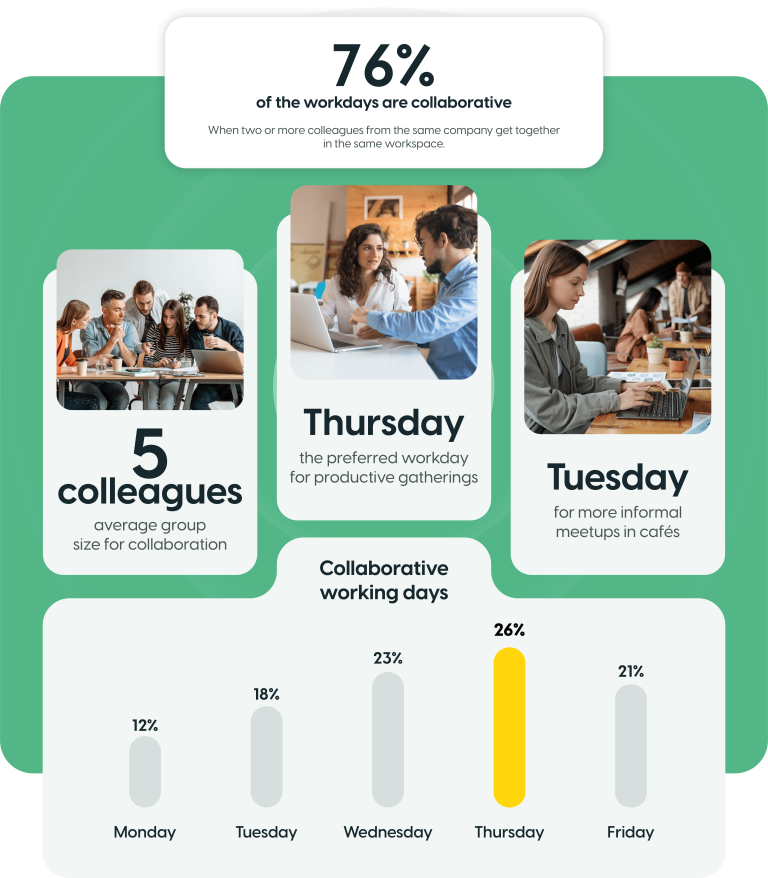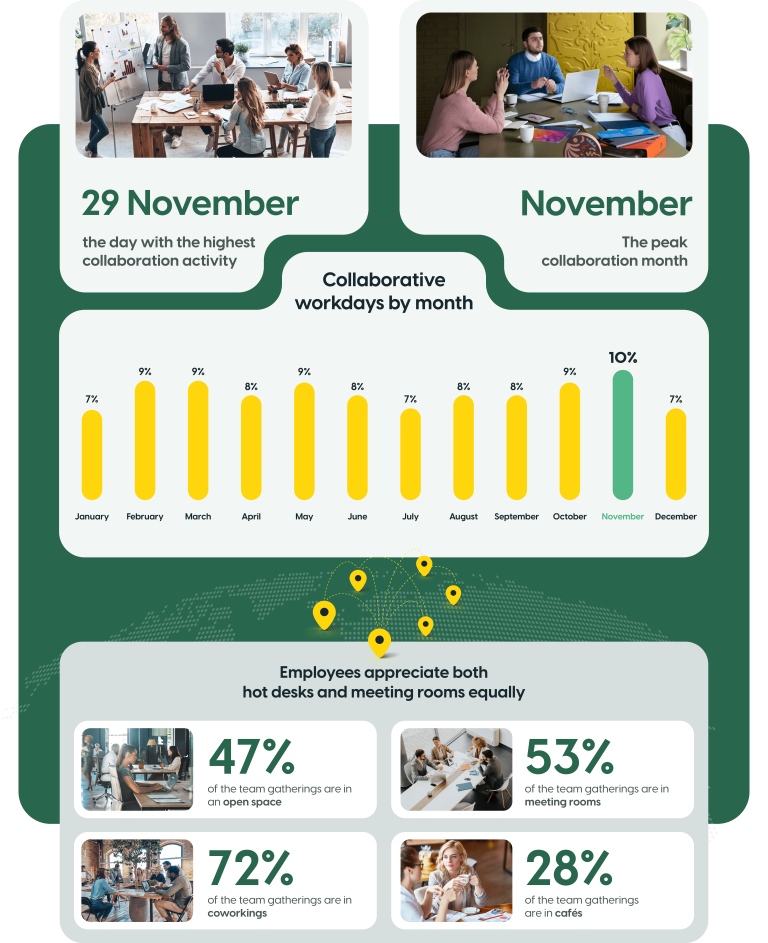If you’ve been in a job for a few years, you might clearly recall the times when work equaled office. Five days per week, usually 9 to 17. Also, the vivid image of commuting to and from the office might dominate your narrative. And if you were not in the lucky batch to live next to the office, the daily trek was surely taking up a good amount of your valuable time.
But then, with the pandemic, the working landscape was reshaped. The transition from being fully in the office to fully remote was well-received in the beginning. People were taking advantage of the free time they won and of the focus without distraction they could get. But after a few months, the remote was not fun anymore, with loneliness and social isolation kicking in, growing the people’s desire to return to the office.
Post-pandemic, with all these new experiences, most of the employees and teams decided that both working styles have advantages and decided to combine them.
Thus a new working paradigm emerged—hybrid working. This setup is working for both the corporate and startup world and is here to stay, experts say.
Especially for startup teams, where productivity is valued over physical space, the hybrid model is a sweet spot, providing the necessary connectivity and teamwork without sacrificing focused, interruption-free work time.
Hybrid Work is The Preferred Mode for CEE Startups
To validate if hybrid working is still The Recursive CEE community’s preferred working style, we asked them in a Linkedin poll. The results confirmed that it is.
64% of respondents work in a hybrid mode, 26% opt for a fully remote setup and only 11% of the votes went for the office mode.


Insights from Pluria, a Romanian-born solution with global presence that elevates the collaboration and productivity of distributed teams, revealed that in 2023, hybrid working teams typically met twice a week, with Tuesdays and Thursdays being popular choices. November 2023 stood out as the month with the highest collaborative workdays, with colleagues meeting not only in traditional offices but also in cafes and open spaces in the Pluria network.
“We recognize that the 9 to 5 solitude of remote work, in the familiar walls of our homes, isn’t good for productivity or well-being, but nobody wants to trade this for a long commute 5 days per week. Even within our own team, we value collaborative days where we get together, talk about vital projects, and enjoy shared lunches at one of the cafés in the Pluria network, all included in our subscription. Connecting with colleagues is the solution for having engaged teams, but going fully to the office is not the way either. That’s why the hybrid setup can be the best choice,” shared Andrei Cretu, Co-founder and CEO of Pluria.
“ Every (startup) team is adapting differently to the new environment. There isn’t one universally well-working solution so you have to try, learn and adapt. Each model (hybrid, remote or in-person) can offer pros and cons. From my observation, working with many startups in the region, a hybrid model is usually the go-to, preferred choice. Yet, if you cannot have this and choose a remote setup, find other ways to bring the people together. In my own (mainly remote) team for example, on top of the operational team’s weekly call, we have a practice called <Personal Development Hour>. Every week we spend an hour together in which someone leads a session on a topic related to personal development,” explains Stoyan Yankov, coauthor of PERFORM: The Unsexy Truth about (startup) Success.
The Benefits of Hybrid Work from Founders’ Perspective
Asking founders from the region about their working setup, not a big surprise was that the hybrid mode was working well for them.
“We have a physical office, but we actually have a work-from-anywhere policy. Because we have a well-defined digitized process, we work as well from home or the office. This hybrid system works great for us because it allows us to have focus, quiet time, which is super important for a startup, but also connects us during the office days,” says Radu Negulescu, founder of Sessions, an advanced platform for online meetings.
Boris Pavlov, founder of FlatAway, a marketplace for short-time rentals, echoed the sentiment. “At Flataway, we decided to work together at the office on two days per week and remote the rest of the time. On Tuesdays and Wednesdays we hold our product meetings, we discuss ideas, brainstorm, and go for lunch together. The individual tasks and calls with clients we leave for the remote days. This was a team decision and we are happy with it, ” he explains.
“We categorize work into two distinct areas: focused work (coding, designing, writing specs, answering emails) where individual concentration is essential for optimal output; and collaborative work (brainstorming, ideation, discussions) where face-to-face interactions are crucial. After experiencing the full remote work environment during the pandemic, we came to value the importance of in-person collaboration. We have now adopted a hybrid approach where we mix working in the office with allowing our team members to work remotely when they need focused time,” says Vladimir Oane, founder of Deepstash.
The aforementioned insights from Pluria are based on the analysis “When and where did teams collaborate in 2023?”, with data collected by Pluria within its platform during 2023. These findings offer insights into the changing landscape of remote and hybrid work environments, helping businesses and organizations refine their team collaboration strategies.
*This story is brought to you with the support of Pluria.








